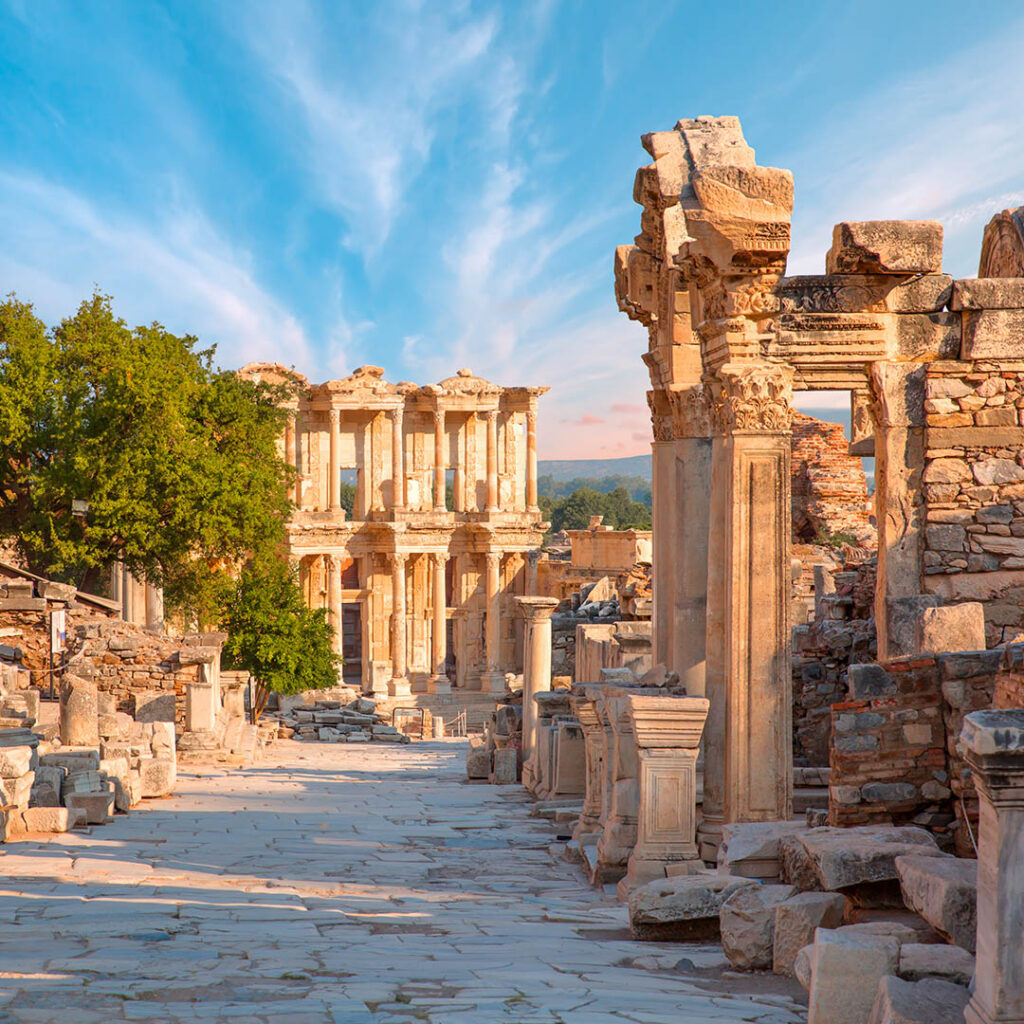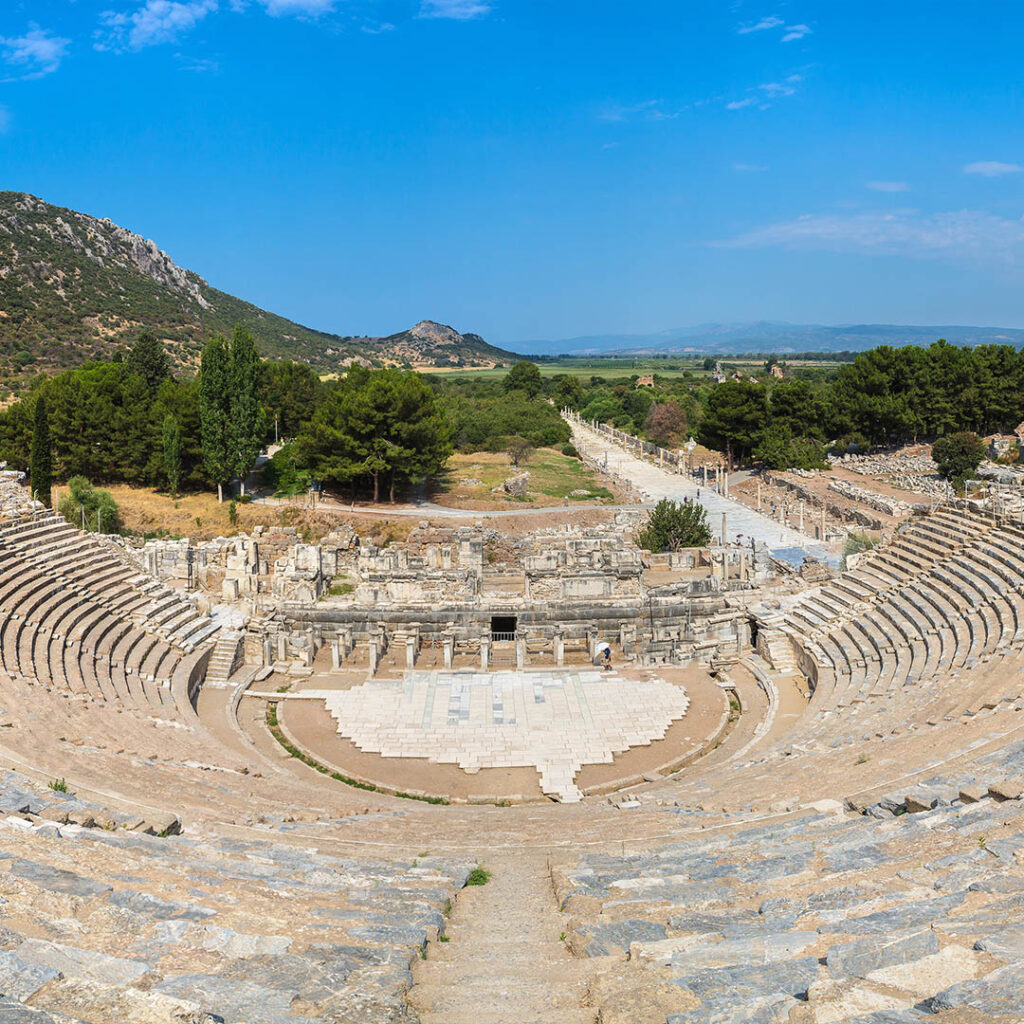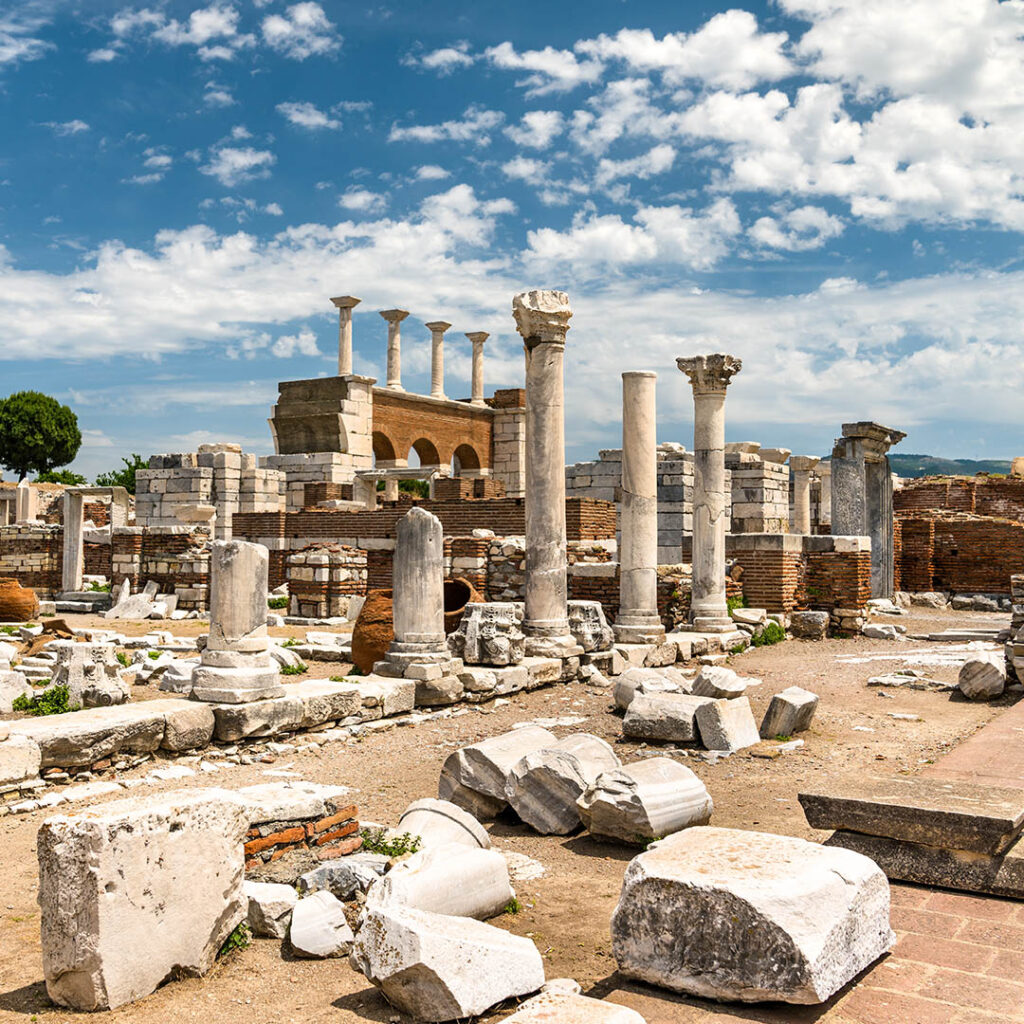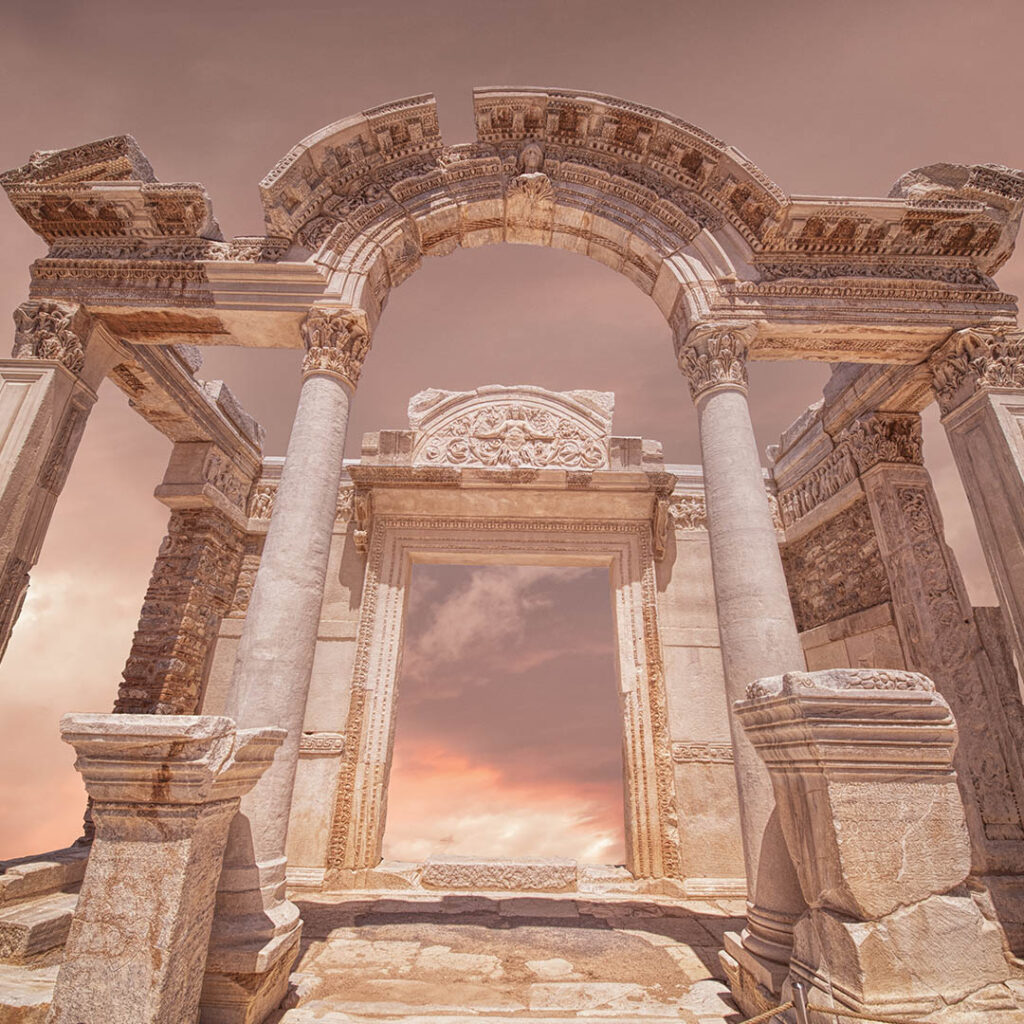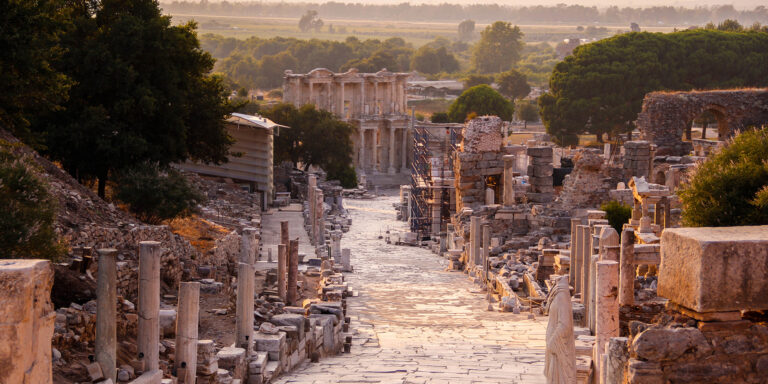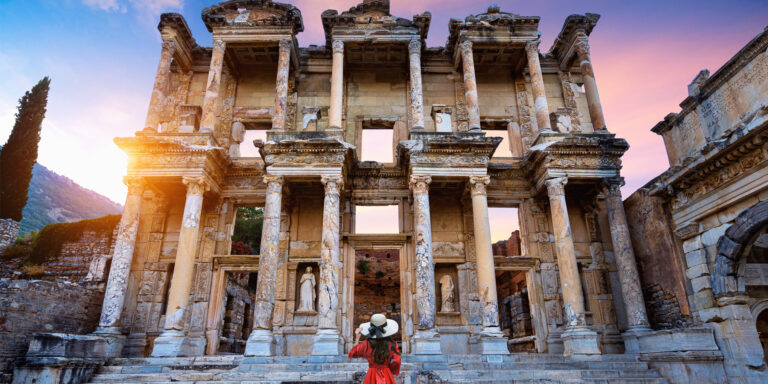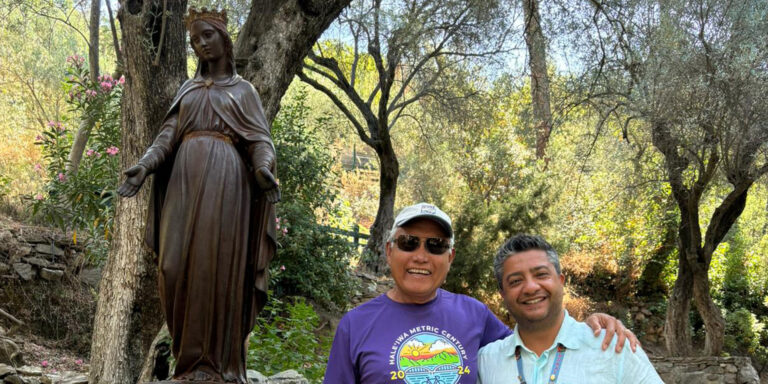Explore the Ancient Wonders of Ephesus
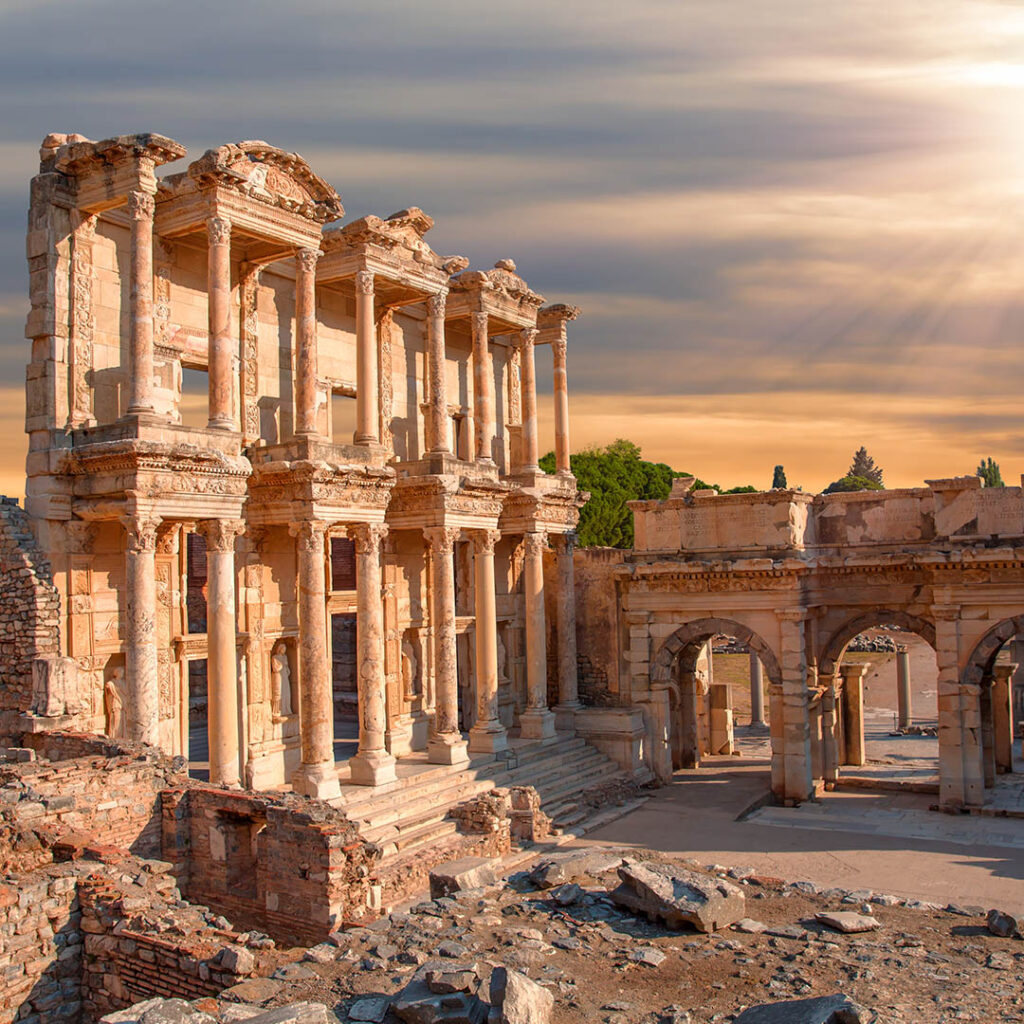
Location and Significance
Ephesus, located near the modern town of Selçuk in Turkey’s İzmir Province, is one of the most well-preserved ancient cities in the world. This historic site lies on the western coast of Turkey, close to the Aegean Sea, and is a testament to the grandeur of classical antiquity. Once a thriving port city and a major hub of trade, Ephesus was one of the most important cities of the ancient Greek and Roman periods, known for its grand architecture and cultural heritage. It is also home to the Temple of Artemis, one of the Seven Wonders of the Ancient World.
Population and Urban Life
In its prime, Ephesus was a bustling city with a population of over 250,000 people, making it one of the largest cities of the Roman Empire. Today, while the modern town of Selçuk is home to around 36,000 residents, Ephesus itself is an archaeological site attracting millions of visitors each year. The city’s ruins give a glimpse into what life might have been like thousands of years ago, with its grand theaters, libraries, and public baths illustrating a sophisticated urban lifestyle.
A Journey Through History
Ephesus has a history that dates back to the 10th century BCE, with influences from the Greeks, Persians, and Romans. It flourished particularly during the Roman period, becoming the capital of the Roman province of Asia. The city is best known for its impressive architectural landmarks such as the Library of Celsus and the Great Theater. Ephesus was also a significant center for early Christianity, with the Apostle Paul visiting and preaching here. The city is traditionally believed to be the final resting place of the Virgin Mary, adding to its religious significance.
Must-Visit Attractions
Ephesus is a treasure trove of ancient wonders, offering a rich historical experience for visitors. Some of the must-see attractions include:
Library of Celsus: This iconic structure is one of the most photographed landmarks in Ephesus. Built in the 2nd century AD in honor of the Roman senator Tiberius Julius Celsus, the library once housed thousands of scrolls and served as a monumental tomb for Celsus. Its intricately carved facade, with grand columns and statues, showcases the architectural brilliance of the ancient world.
The Great Theater: This massive amphitheater, capable of seating up to 25,000 people, was used for both gladiatorial contests and theatrical performances. It also holds historical significance as the site where St. Paul is said to have preached to the Ephesians.
Temple of Artemis: Although only a few remnants of this once-majestic structure remain, the Temple of Artemis was one of the Seven Wonders of the Ancient World. Dedicated to the goddess Artemis, it was a magnificent example of classical architecture and a symbol of the city’s former glory.
The Terrace Houses: Also known as the “houses of the rich,” these well-preserved residential complexes provide insight into the opulent lifestyle of Ephesus’s elite.
The Basilica of St. John: Located on the hill above Ephesus, this basilica was built in the 6th century over the believed burial site of St. John the Apostle. The ruins offer a peaceful setting and stunning views of the surrounding area, including the distant Temple of Artemis.
House of the Virgin Mary: Located on Mount Koressos, just a few kilometers from Ephesus, this modest stone house is believed to be where the Virgin Mary spent her final years. According to Christian tradition, St. John brought Mary to Ephesus after the crucifixion of Jesus, and she lived here until her Assumption. The site has become an important pilgrimage destination for both Christians and Muslims.
Ephesus Tours
- 3 Domestic Flights
- Combined Tours Package Tours Private Tour Small Group Tour
From $2,100.00
- Visit: The House of the Virgin Mary, Ancient City of Ephesus, Artemision Temple
- 2 Domestic Flights
- Daily Tours Private Tour Turkey Tours
From $335.00
- Visit: The House of the Virgin Mary, Ancient City of Ephesus, Artemision Temple
- 7 Hours
- Kusadasi - Ephesus Tours Private Tour Shore Excursions
From $65.00
- Visit: The House of the Virgin Mary, Basilica of St. John, Ancient City of Ephesus, Artemision Temple
- 7,5 Hours
- Kusadasi - Ephesus Tours Private Tour Shore Excursions
From $75.00

